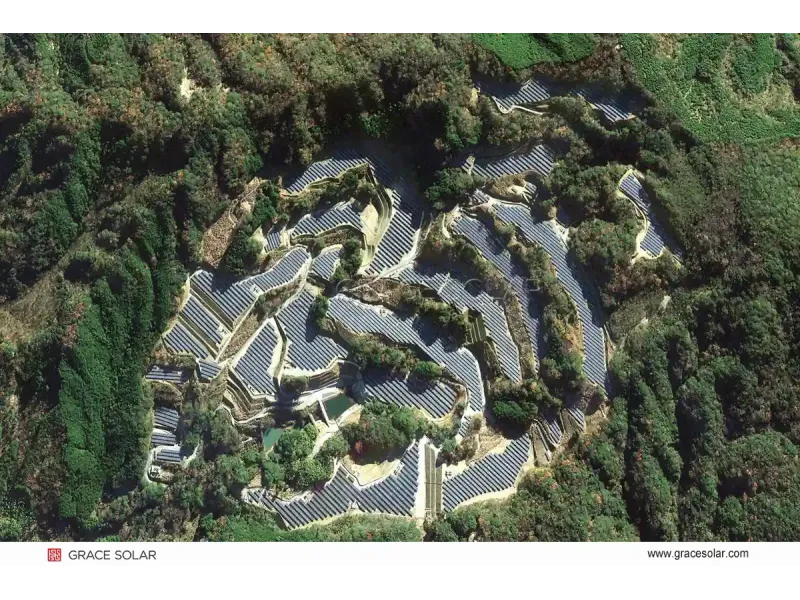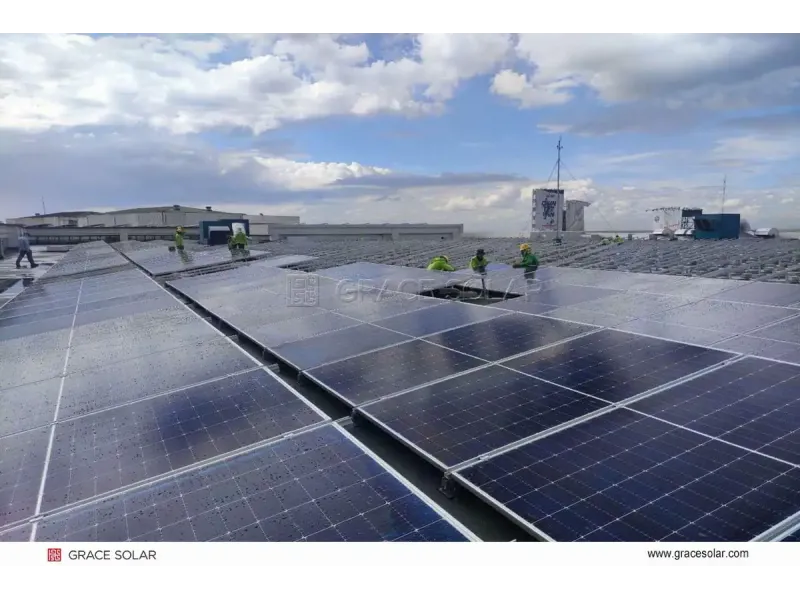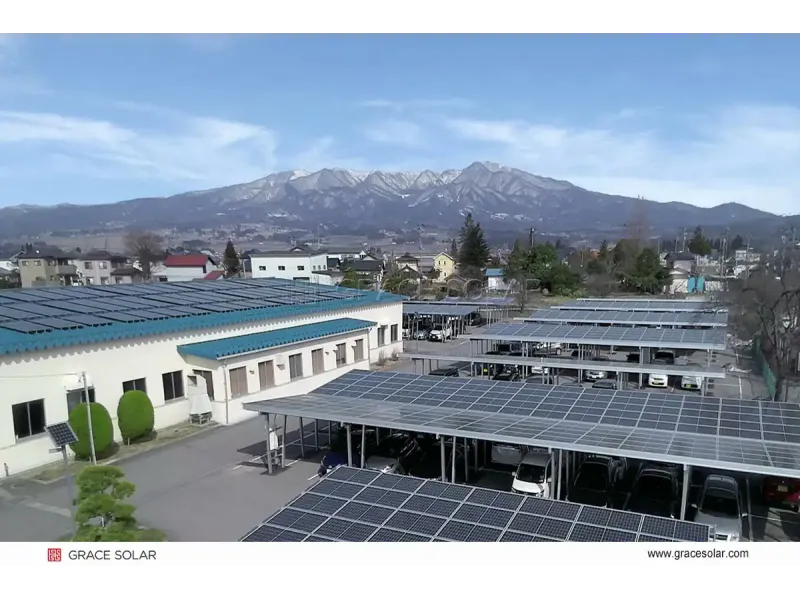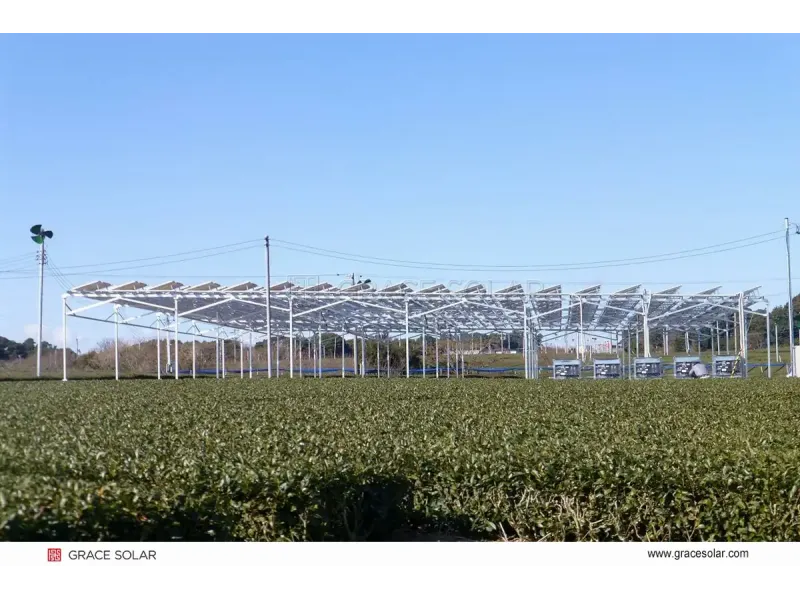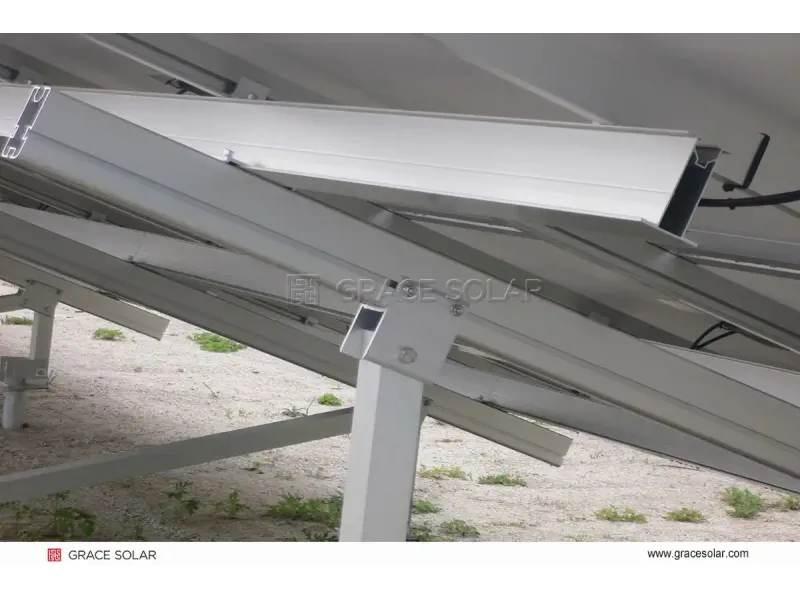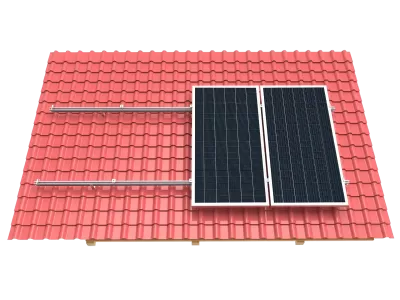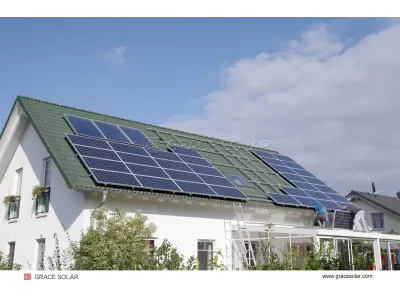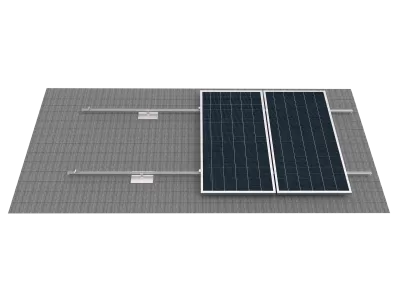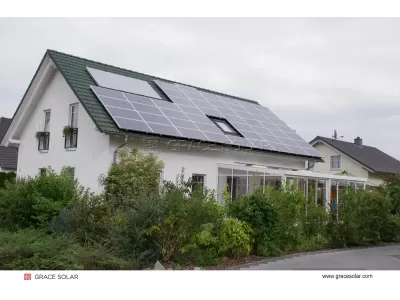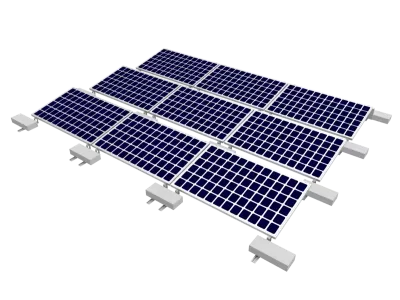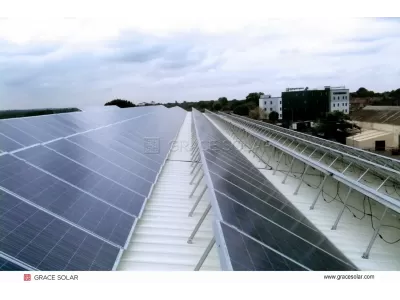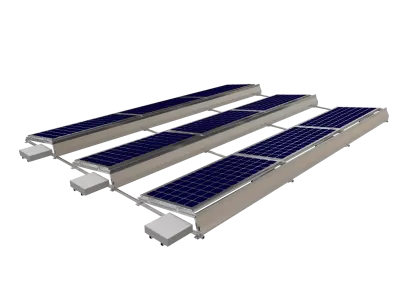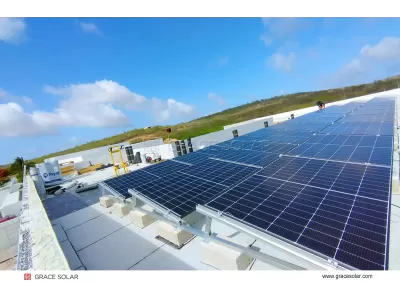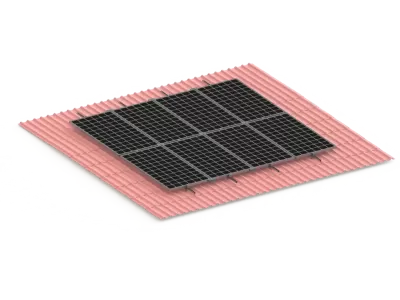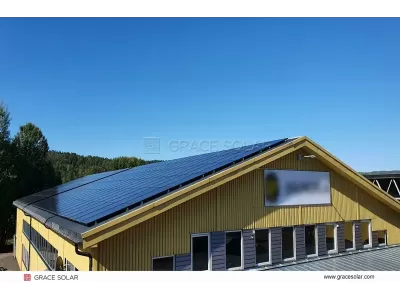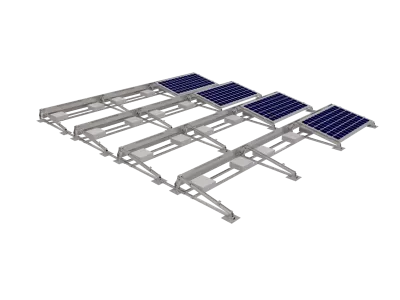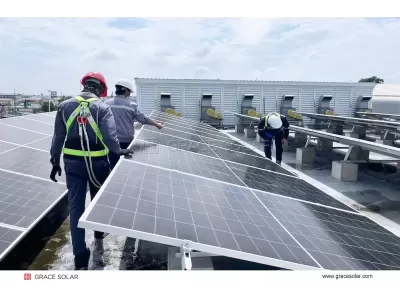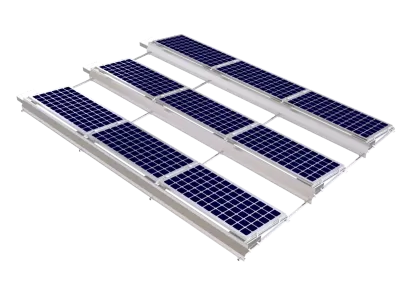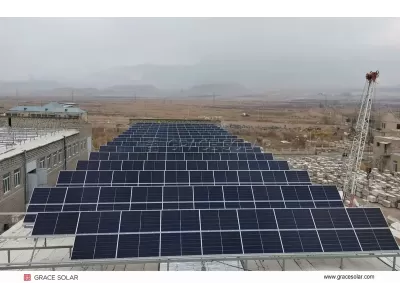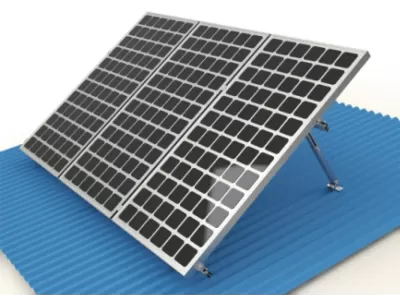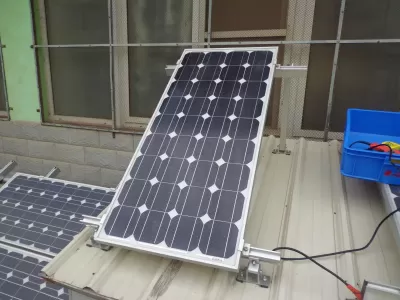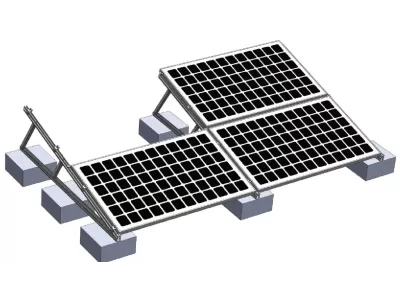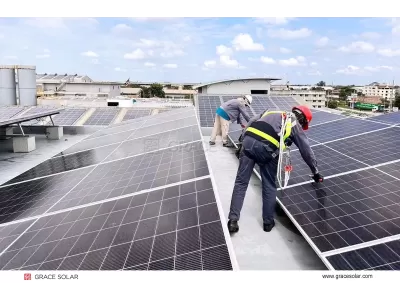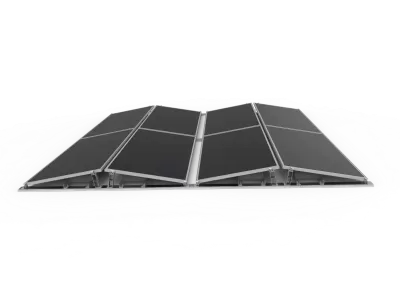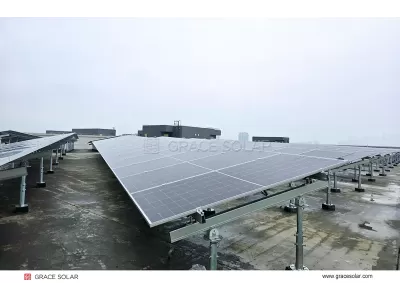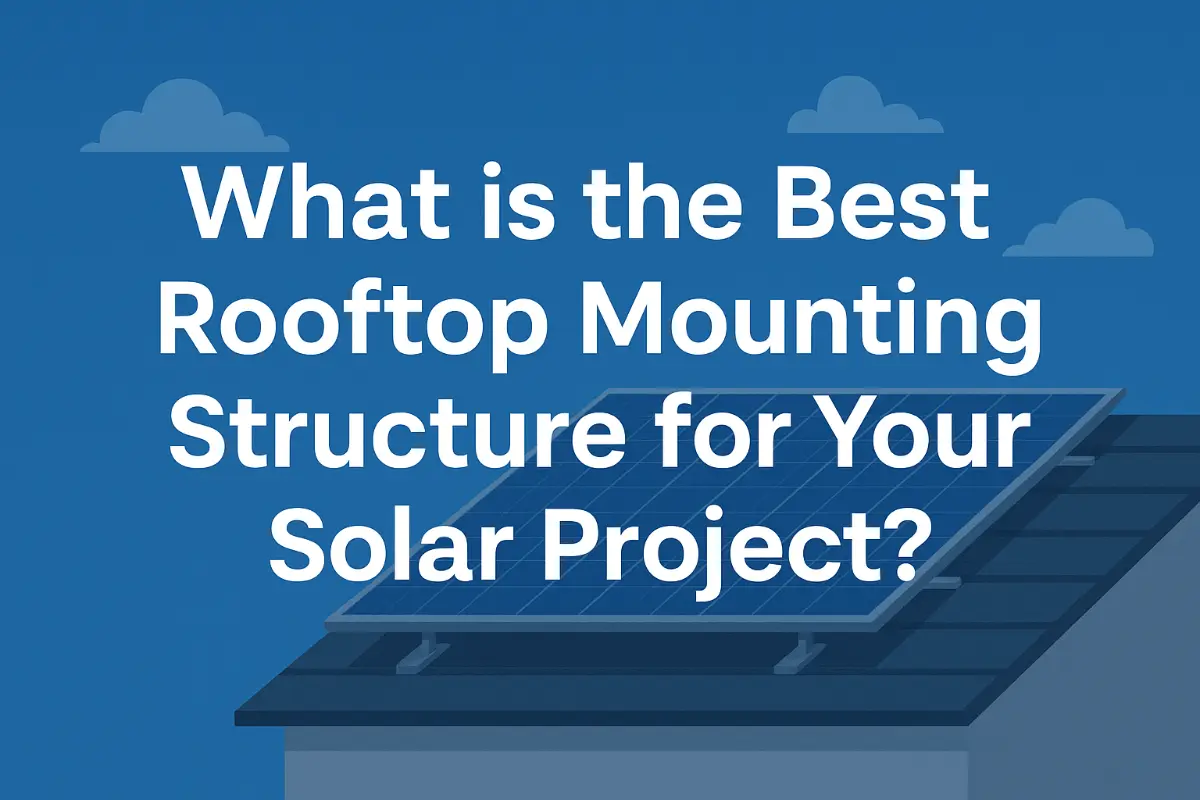
More Than Just Hardware: The Engineered Foundation of Your PV System
A rooftop mounting structure is the critical backbone that determines the safety, efficiency, and longevity of your solar investment. Unlike conventional frames, premium mounting systems must combat UV degradation, withstand extreme wind uplift (up to 200 km/h), prevent water intrusion, and maintain structural integrity for decades. With over 48GW of global installations across 100+ countries, Grace Solar has pioneered AI-optimized solutions that meet these challenges through proprietary engineering and rigorous testing.
The optimal structure varies significantly based on roof material, slope, and local climate conditions. Below, we analyze the premier solutions for each roof category, including key technical considerations most installers overlook.
Breaking Down the Best Rooftop Mounting Structures by Roof Type
1. Flat Roofs: Ballasted & Hybrid Systems
The primary challenge is securing arrays without compromising roof membranes. Grace Solar's systems excel through:
- Ballasted Systems: Concrete-free designs using polymer-encased weights (3-7 PSF) that distribute load evenly
- Hybrid Solutions: Reduced ballast + seismic anchors for high-wind regions (certified for 200+ km/h)
- Tilt Optimization: 5°-15° adjustable angles to maximize seasonal yield
Pro Tip: Always conduct a core sample test to verify roof deck integrity before ballast installation.
2. Pitched Roofs: Rail-Based & Rail-Less
For tile, asphalt, or slate roofs, Grace Solar's residential systems offer:
- Rail-Based (GS-Energy): Patented interlocking rails with 6ft spans for complex layouts
- Rail-Less: Direct-attach clamps reducing install time by 40%
- Waterproof Flashings: Triple-sealed aluminum bases with 25-year leak protection
Critical: Always verify rafter spacing - systems require 16"-24" OC for UL2703 compliance.
3. Metal Roofs: Zero-Penetration Clamping
Standing seam roofs enable revolutionary installations:
- Seam-Clamp Technology: S-5! compatible grips requiring no drilling
- Wind Uplift Resistance: Tested to ASCE 7-16 standards for hurricane zones
- Warranty Preservation: Zero roof penetrations maintain manufacturer coverage
Note: Always verify seam height compatibility (typically 1.5"-3") before ordering clamps.
Why Global EPCs Specify Grace Solar Racking
Material Science Innovation
Our proprietary ANTAI 6A22 aluminum alloy delivers 32.6% higher yield strength (285-310 MPa) than standard 6005-T6. This enables:
- Longer rail spans (up to 6ft)
- 30% weight reduction
- Superior corrosion resistance in coastal environments
Certification & Compliance
Every system undergoes 200+ test protocols including:
- UL 2703 fire safety (Class A)
- Miami-Dade TAS 202 HVHZ wind certification
- ISO 9001 manufacturing quality
- Full bankability reports for financiers
Digital Engineering Tools
Our GS-Smart Configurator platform provides:
- AI-powered wind/snow load calculations
- 3D modeling with shading analysis
- Automatic BOM generation
- PE-stamped drawings for permits
Real-World Performance: Japan Typhoon Case Study
Challenge: 8MW commercial rooftop in Okinawa requiring >200 km/h wind resistance without roof penetrations.
Solution: Grace Solar's hybrid ballast system with seismic anchors and vortex generators.
Result: Zero damage during direct Category 4 typhoon impact, with 12% higher energy yield than projected.
The Verdict: How to Select Your Optimal Structure
The "best" rooftop mounting structure isn't a universal product - it's the solution engineered for your specific:
- Roof age & material: New vs. existing roofs require different attachment strategies
- Local climate: Snow loads, wind speeds, and seismic zones dictate design
- Energy goals: Maximum yield vs. budget constraints
- Maintenance access: Cleaning requirements and O&M planning
Key Decision Checklist
- ✅ Roof load capacity (PSF or kN/m²)
- ✅ UL 2703 fire classification
- ✅ Wind uplift certification (ASCE 7 or Eurocode)
- ✅ Warranty terms (25-year standard)
- ✅ Installation time savings (modular vs. custom)
This commitment to precision engineering defines Grace Solar's approach. With 100+ patents and 15GW annual production capacity, we deliver not just products, but performance-optimized solar foundations backed by global technical support.
Ready to engineer your optimal solar foundation?
Contact our team for a free system design and project quote
Request Custom Quote
